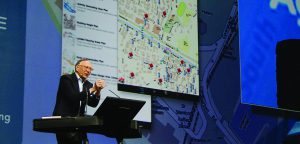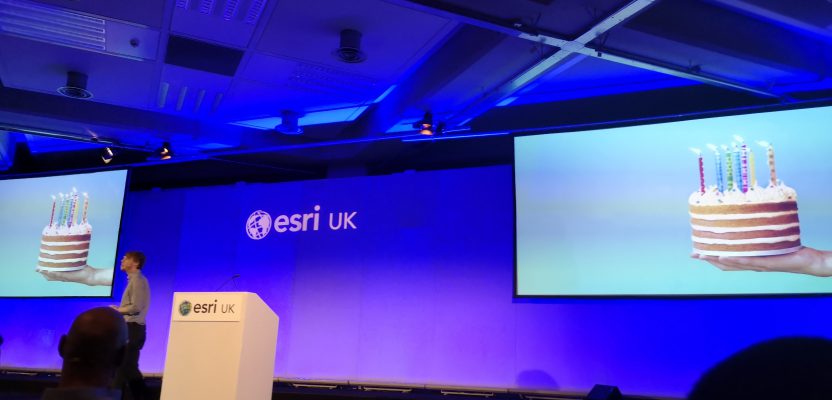The late Roger Tomlinson is credited with being the father of GIS, but, without the commercial success of Jack and Laura Dangermond’s company, Esri, GIS would never have touched our lives the way it has.
This year Esri celebrates its 50th year, though you won’t find any huge announcements from them about it as Jack has been modest, saying that it is “about the users” (his words).
The company started very small as a land-use consulting firm called the Environmental Systems Research Institute, with only a couple of staff members and funded with Jack’s own savings.
Esri went on to develop computerized techniques for solving geographic problems. In the mid-1970s, it pioneered a map-based information system that allowed it to gain large clients.
It wasn’t until 1981 that Esri released its first commercial application called ARC/INFO. If you’re privileged to have ever used a 1980s computer you’ll realize how innovative that must have been, dealing with lines and points. It seems simple by today’s standards, but then it was ground-breaking.
In the same year Esri held its first user conference with a modest attendance of 18 users.
Esri developed larger projects; in 1983 this included working with the United Nations Environmental Programme on a project that involved the development of high-resolution world maps.
In 1986, Esri released a new product called PC ARC/INFO, designed for personal computers and home use. It was a milestone in GIS as it accelerated users to 1,500 by 1988. Esri also started to open offices in Canada, France, and other parts of the United States.
It was the release of ArcView in 1992 that changed GIS as we know it. Within the first six months it sold more than 10,000 copies. GIS had become fully accessible to the world. You could use it on your home desktop machine and work with geographic data in a system that was affordable and easy.
By 1998, Esri had more than 100,000 users and released ArcView 3.2. This changed the world: it put GIS in the hands of everyone who wanted it. We could plot GPS positions on a map; we could analyze overlying risks and constraints. There was finally a way of visualizing the geospatial data around us in a way that had never been available to us before.
We had heard of GIS and what it meant, but it wasn’t until we used it in ArcView 3 that we truly understood the power of what we could do with it.
By 2003 approximately 12,000 people from 135 countries attended the company’s annual UC. It was shortly after this that ArcGIS 9 was released, the software that everyone knows and loves, the foundation of GIS that many people learned at school and that still lingers in an updated guise as ArcGIS 10.7 (at time of print).

Although Jack Dangermond and Esri aren’t accredited as being the founders of GIS, they should be noted as the enablers. We shouldn’t be celebrating just Esri being 50 years old; we should also celebrate GIS being 50 years old.
If there were any question about how important GIS is, I refer you to the recent announcement by Professor Crowther of Crowther Lab that GIS, or rather Esri GIS, may have saved the planet. Their work gives us the knowledge and tools to offset the 10 gigatons of carbon we release into the atmosphere every year. I cannot think of a better 50th birthday present!

